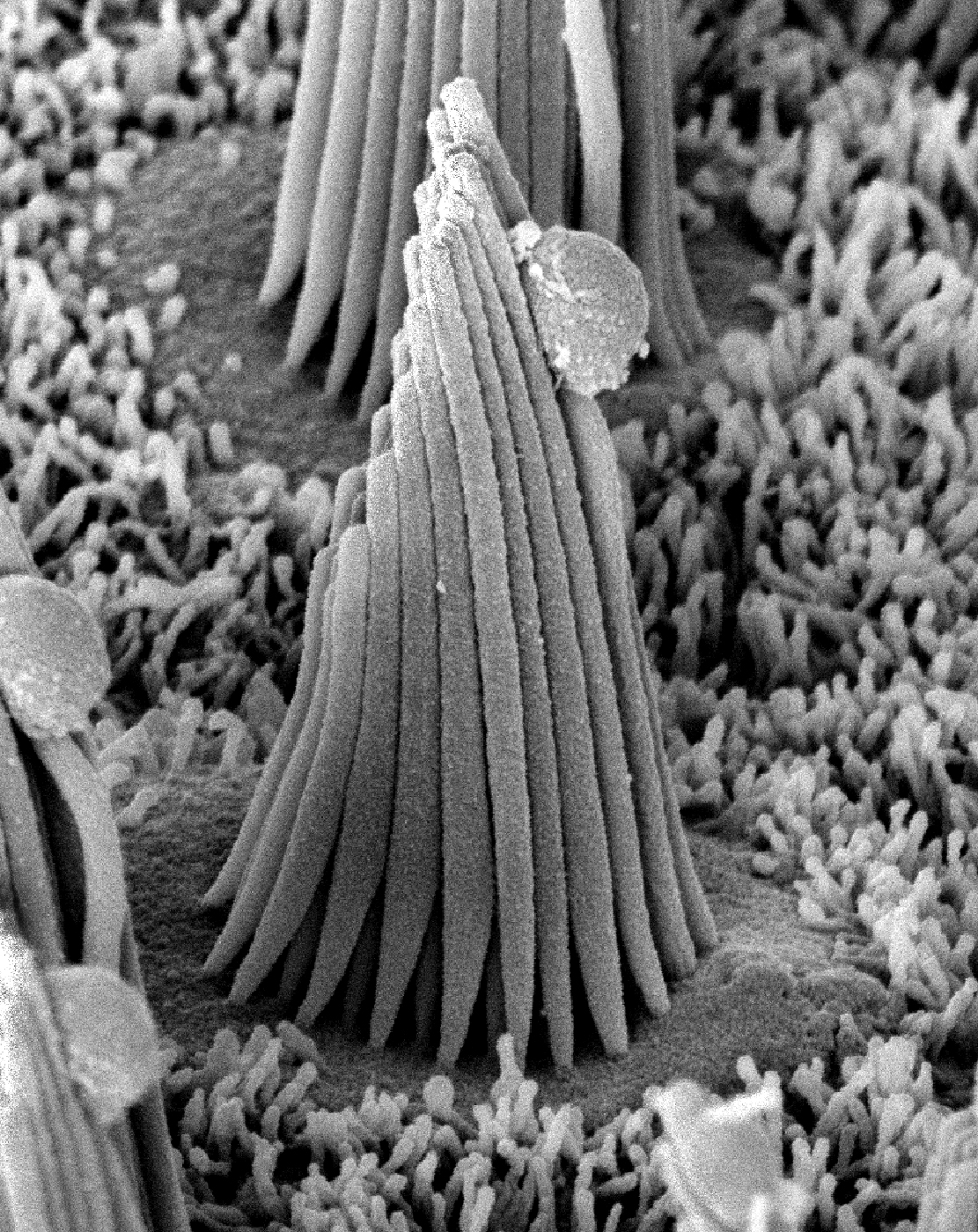Research Introduction
Thirty million Americans have significant hearing problems that range in severity from modest difficulty with speech comprehension to profound deafness. A comparable fraction of the population, about 10%, is afflicted in other industrialized countries as well. The majority of the hearing-impaired suffer from sensorineural hearing loss. Despite the common name for this condition, "nerve deafness," sensorineural hearing loss usually results from damage to the sensory cells of the inner ear, rather than to the associated nerve. Each cochlea normally contains about 16,000 of these receptors, which are termed hair cells. Similar hair cells in the vestibular labyrinth mediate our sense of equilibrium, or responsiveness to linear and angular accelerations. Because they are not mitotically replaced when damaged, human hair cells are continually lost throughout life as a result of genetic deficits, infections, ototoxic drugs, acoustical trauma, and ageing. In the hope of laying the groundwork for an understanding of normal hearing, as well as its deterioration and restoration, the members of our group are investigating the structure and operation of hair cells. We employ a variety of technical approaches, including those of biophysics, electrophysiology, developmental biology, biochemistry, genetics, molecular biology, immunology, and ultrastructural analysis. In addition, we attempt to assimilate our findings into mathematical models of hair-cell function.
A hair cell is an epithelial cell derived from the embryonic ectoderm. Its apical surface is characterized by the hair bundle, a cluster of 20-300 mechanoreceptive "feelers" termed stereocilia. At the tall edge of the beveled hair bundle stands a single kinocilium, a microtubule-containing true cilium. When the cell experiences an auditory or accelerational stimulus, deflection of the hair bundle is transduced into an electrical response, the receptor potential, across the cell's plasma membrane. Our earlier experiments have shown that transduction involves the direct opening of cation-selective ion channels as a result of mechanical stimuli applied to the hair bundle. A positive stimulus, which moves the bundle towards its kinocilum-bearing tall edge, depolarizes the membrane. This response is then transmitted to an afferent fiber of the eighth cranial nerve by synapses that stud the cell's basolateral membrane surface. The resultant signal travels to the brain, where it is interpreted as a sound or an acceleration.
 |
A scanning electron micrograph of a hair bundle protruding abouit 10 µm from the apical surface of a hair cell in the bullfrog's sacculus. In this instance, the bundle includes some 60 stereocilia, each of which contains a core of cross-linked actin filaments. At the tall edge of the bundle stands the kinocilium, which is endowed with a spherical swelling at its tip. The supporting cells that surround the hair cell are studded with microvilli.
|
